Sylvania LED Compact Fluorescent bulbs
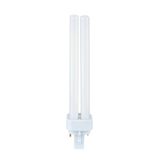
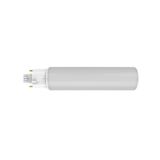
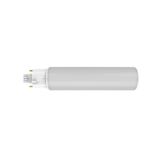
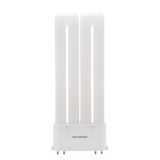
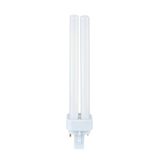
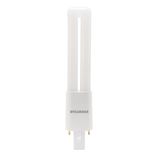

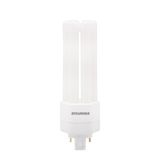
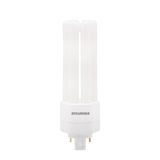
sylvania led compact fluorescent bulbs retrofit context and scope
Legacy luminaires with compact fluorescent geometry still occupy corridors, washrooms, and small offices. These LED drop-ins keep the physical footprint, respect thermal limits in enclosed domes, and publish honest inrush so Type B/C MCBs don’t nuisance-trip on shared phases. For programmes staged floor by floor, sylvania led compact fluorescent bulbs let teams hold photometric intent while cutting relamp visits.
sylvania led cfl replacements wiring and formats
Expect G24d/q and GX24d/q plug-ins, 2D plate substitutes, and “stick” formats that match diffuser clearance. Options include HF-compatible versions for existing electronic ballasts and direct-mains SKUs with an LED starter/fuse for magnetic trays. Label the tray after conversion, lock polarity where DC rails are used, and verify emergency feed upstream. When tender notes call for fast swaps, sylvania led cfl replacements reduce site time because holders and bezels remain untouched.
sylvania energy saving led lamps performance and compliance
Efficacy lands around 110–150 lm/W (optic dependent) with CRI 80 standard and CRI 90 where finishes matter; CCT sets 2700/3000/4000/6500 K stay within ≤3-step SDCM so adjacent rooms read the same. PF ≥0.9 on mains-operated types, THD ≤15 %, and ripple controlled for calm low-level scenes. Safety and EMC follow EN 61347, EN 55015, EN 61000-3-2, and photobiological EN 62471. Where EPC outcomes are audited, sylvania energy saving led lamps typically meet kWh targets without altering breaker curves or cable topology.
sylvania compact led bulbs envelopes and photometrics
Short-neck bodies avoid diffuser contact; quasi-omnidirectional optics fill shades without hot crowns; lumen bands run ~600–2,000 lm to cover small rooms through corridors. Operating windows are commonly −20…+45/50 °C depending on housing and drive current. On housing and hospitality schedules, sylvania compact led bulbs keep ceiling lines consistent while allowing a single spare strategy across cap types.
sylvania fluorescent retrofit leds installation and safety
Conversions must respect IEC 62776 for double-capped LED lamps and EN 60598 for luminaire work. Replace starters with supplied LED fuses on magnetic gear; isolate or retain HF ballasts only where the compatibility list says so. Maintain earth continuity, preserve IP with correct glands, and record MCB curves versus declared inrush. In classrooms and stair cores, sylvania fluorescent retrofit leds pair neatly with corridor profiles that hold 10–30 % background for egress.
sylvania plug-in led bulbs gear pairing and migration
Four-pin routes suit HF ballasts and emergency inverters; two-pin routes move to direct-mains with an LED fuse. If a site is migrating in phases, document which wings stay HF and which go direct so crews don’t mix wiring on one circuit. For rooms where dimming is still needed, add a remote 1–10 V or DALI-2 driver upstream. Plant areas with sealed bulkheads benefit when sylvania plug-in led bulbs share the same gland threads and gasket kits as the outgoing lamps.
sylvania led cfl lighting solutions selection for B2B and procurement
Start from the photometric target and room geometry, then lock lumen class, CCT/CRI, and envelope length/diameter. Fix interface early—HF-compatible vs direct-mains—and verify emergency method and test regime. Record inrush, PF at dim, and surge so breaker diversity doesn’t drift during rollout. Procurement notes should tag sylvania led cfl lighting solutions by EAN/MPN, wattage band, CCT/CRI, base type, and “HF/direct” code to stabilise spares.
Technical specifications and standards for engineers
- Electrical: 220–240 V AC on mains types; PF ≥0.9; THD ≤15 %; declared inrush; surge 1–2 kV L-N typical.
- Photometric: 2700/3000/4000/6500 K; CRI 80/90; ≤3-step SDCM; efficacy 110–150 lm/W; calm low-scene flicker.
- Thermal/mechanical: −20…+45/50 °C; short-neck options; keep diffuser clearance and airflow in enclosed domes.
- Interfaces: HF-compatible (retain ECG) or direct-mains (LED fuse); emergency per EN 60598-2-22.
- Compliance: IEC 62776, EN 60598, EN 61347, EN 55015, EN 61000-3-2, EN 62471.
Applications and compatibility
Offices and education use neutral whites with UGR handled by the existing optics; stair cores run corridor function with long fades; healthcare prefers sealed faces and low ripple near instrumentation; social housing needs robust bezels and predictable restart after brief outages. Always confirm holder condition and spring force, replace brittle sockets, and align CCT/CRI zone by zone.
Integration with other Sylvania categories
Tie retrofits to Sylvania automatics and control for presence/daylight logic and addressable testing on emergency lines. In wet or dusty zones, consider Sylvania 3-proof battens and sealed accessories while keeping CCT/CRI aligned with adjacent panels and linear luminaires.
Selection criteria for B2B clients
- Define wiring path (HF-compatible vs direct-mains) per circuit and publish the matrix.
- Choose lumen pack and CCT/CRI per room; verify vertical lux where wayfinding matters.
- Check dimming policy; where scenes are required, move control upstream of the socket.
- Record inrush/PF/surge per SKU; align MCB curves; keep emergency upstream of dimming.
- Standardise envelope sizes and label trays post-conversion for fast audits.
Advantages of working with Bankoflamps
Pricing is aligned to room bundles, and you see live EU stock before crews are booked. Quotes land in about an hour with EAN/MPN so variants stay fixed. Your portal shows lead times, shipment status, and downloadable price lists with validity windows suited to phased works. Approved accounts can use post-payment up to 30 days. We consolidate partials to cut freight, and your account manager cross-checks interface type, lumen pack, CCT/CRI, inrush data, holder condition, emergency method, and gland sets against your drawings so cartons arrive site-ready across France, the Baltics, Germany, Spain, Italy, Belgium, and the Netherlands.